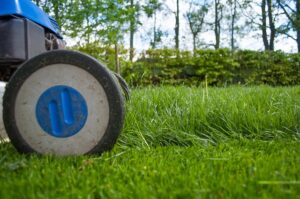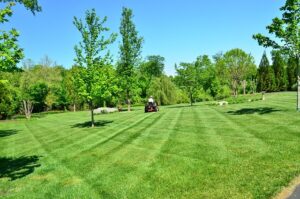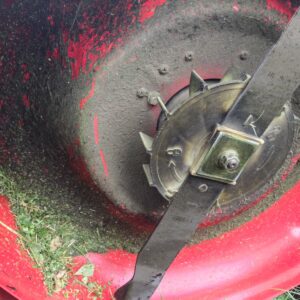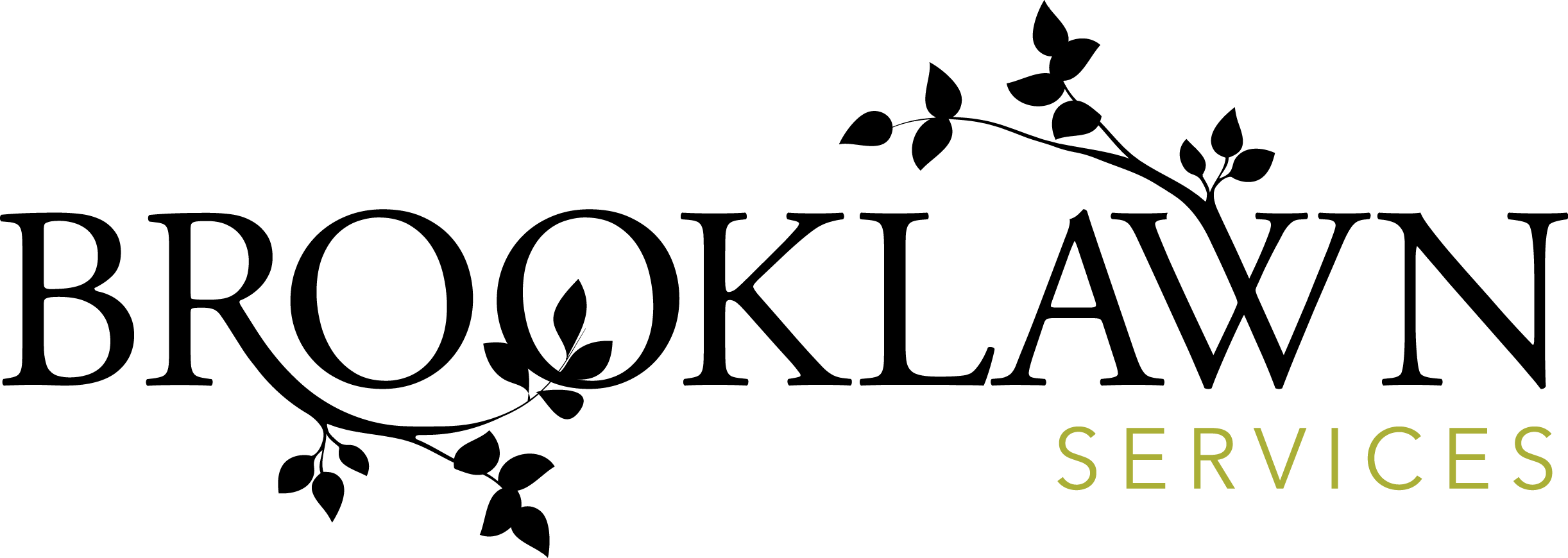Mowing is one of the most common lawn responsibilities for all homeowners, so it’s essential that they are educated on and follow the top-recommended lawn care practices. Otherwise, you’re bound to see health problems pop up in the grass. Whether you’re prone to accidentally scalping your lawn or looking to be a more knowledgeable lawn owner, these seven tips will advance your lawn care skills this season. Read on to discover the top mowing best practices we recommend to keep your Indiana lawn thriving year-round.
Why is mowing important?
 Mowing is critical to maintaining a beautiful and healthy lawn for several reasons. Most notably, an unkempt lawn can look wild within a couple of weeks! An overgrown lawn doesn’t do any favors for your property value or home aesthetic, so most homeowners choose to keep their lawn under control.
Mowing is critical to maintaining a beautiful and healthy lawn for several reasons. Most notably, an unkempt lawn can look wild within a couple of weeks! An overgrown lawn doesn’t do any favors for your property value or home aesthetic, so most homeowners choose to keep their lawn under control.
In addition to providing aesthetic value, it also prevents a myriad of health problems from creeping into the grass. Molds, weeds, and pests (including small insects and larger rodents) thrive in overgrown lawns, so mowing frequently prevents their habitation. Finally, mowing your lawn helps relocate nutrients from the grass blades to the roots, which aids in strengthening the plant’s overall health. So let’s dive into seven best practices for your Indiana lawn!
1. Mow 3.5 inches during the warm seasons.
As Indiana lawn experts, we recommend mowing to a height of 3.5 inches during the warm seasons. This longer length makes your lawn look lush and protects the soil from evaporation. The summer is notorious for leaving lawn owners with gritty soil and dehydrated grass, but longer blades shield the earth from the sun and retain soil moisture.
Mowing high also benefits your lawn’s appearance by improving its color, vigor, and thickness. A general rule of thumb is that as the grass blade length increases, so does the color. The farther away the grass tip is from the root, the darker the blade will become.
2. Cut your grass vertically to the ground.
It also doesn’t hurt to add vertical trimming, or vericutting, to your lawn care routine. A mower with blades perpendicular to the surface will act as an eager weed-eater. Plus, vertically trimming the edges will reduce crabgrass germination in your turf. This method disrupts the parasitic growth patterns and creates an inhospitable environment for crabgrass to take root, promoting a healthier and more resilient lawn. While it’s not essential, vericutting can be a productive addition for enthusiastic lawn owners!
 3. Change your mowing patterns each mow session.
3. Change your mowing patterns each mow session.
One of the simplest mistakes lawn owners make is mowing in one direction. Over some time, your lawn mower wheels can create ruts in the lawn, leading to a bumpy and uneven surface. That’s why it’s always best to change your mowing patterns each time you trim. One day, you can mow north to south, and the next, you can mow east to west. You can even mow diagonally to diversify your mowing directions as much as possible.
4. Cut your lawn when it’s dry.
Often, rain can weigh the grass down, which makes achieving a clean-cut challenging. You’ll find that the way to get the best cut is to mow when the grass is dry. A dried lawn will be much easier to tackle, as the grass blades will stand upright. It’s perfectly acceptable for the soil to be lightly damp as long as the grass isn’t bending from the weight of a recent rain shower.
5. Mow no more than ⅓ of the grass blade at a time.
Best known as the One-Third Rule, lawn care specialists recommend mowing no more than ⅓ of the grass blade in one trimming session. Followed by educated experts and first-time homeowners, this rule is praised for maintaining a steady compromise between a lusciously long length and a healthy trim. The One-Third Rule is often the perfect ratio to reduce stress on the grass and keep your lawn at a beautiful, healthy length. It protects the life-giving roots while maintaining a suitable blade length.
6. Avoid cutting the lawn during the hottest times of the day.
Hot weather already causes significant strain on your grass, but mowing during the hottest time of the day will only add to the stress. It’s best to mow earlier in the day to avoid having the sun directly on your lawn. Doing so prevents the sun from damaging the delicate grass blades and reduces the plant’s stress. This thoughtful approach to lawn care maintains the lushness of your grass and contributes to its resilience when facing harsh weather conditions.
 7. Sharpen your mower blade frequently.
7. Sharpen your mower blade frequently.
Just like kitchen knives, your mower blades will get dull over time. If you notice that your blades are cutting unevenly or are tugging on the mower, chances are your blades need to be sharpened. The average homeowner only needs to worry about sharpening their mower blades annually, but if you have an extensive yard, it’s better to sharpen the blades twice or more per year.
Enjoy a thriving lawn with Brooklawn today!
Many homeowners approach mowing like a straightforward process, but there is so much to learn about efficient mowing that protects the wellness and appearance of your turf. If you start by implementing these seven simple mowing best practices is an excellent way to bolster your lawn and find a mowing routine that works for you. But if you’re still struggling to maintain the lawn of your dreams, our local lawn care team is here to help.
Brooklawn offers Indiana residents a comprehensive lawn care program to cover all their lawn needs. From fertilizations that boost your lawn growth to pest-shielding insect control, our lawn care team will ensure your lawn is pampered with top-notch care. Our experts will leave your lawn flourishing by using thorough knowledge and experience to tend to your turf. Contact us today to get a FREE quote for our full-service lawn program. For more lawn care tips, browse our blog here.


